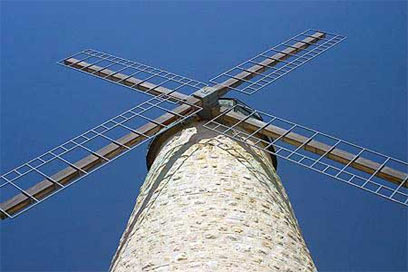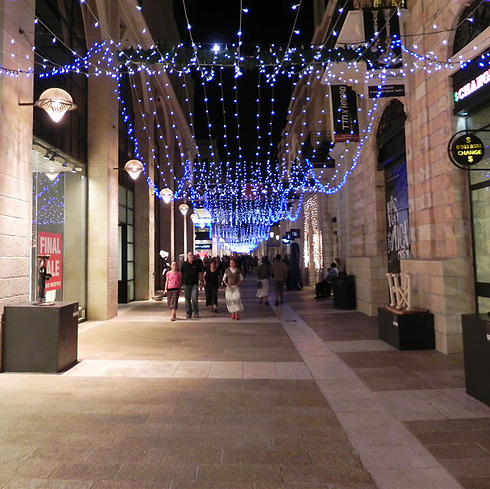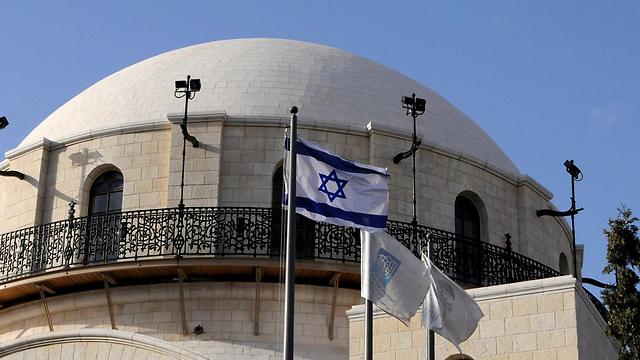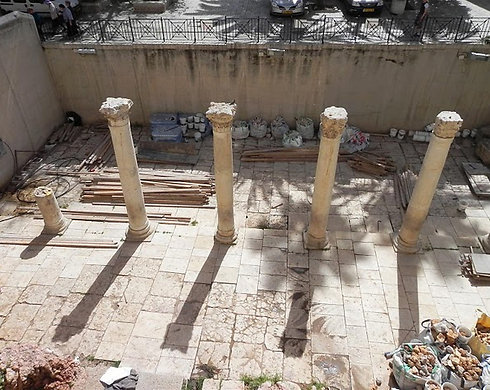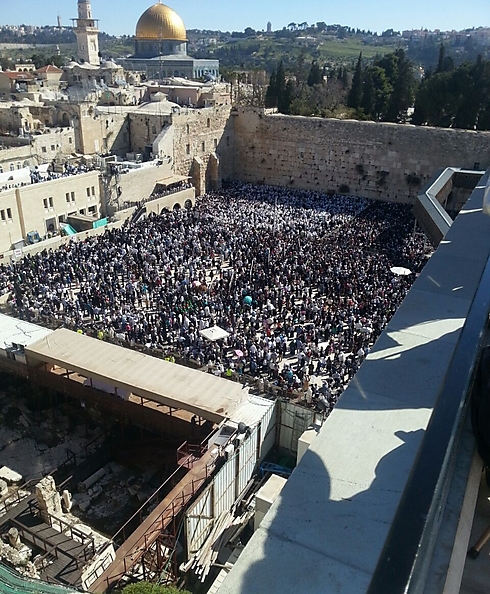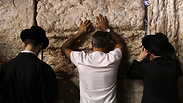
Take an all night selichot tour of Jeruselem before High Holidays
Month of penitence is a fascinating and exciting experience in Jerusalem, as city comes alive until late hours, voices praying are heard coming out of synagogues and a holy atmosphere hangs in the air.
Asking for forgiveness and and soul-searching are almost automatically tied to the month of Elul, the last month of the Hebrew year, which is considered a month of introspection and thinking about one’s actions during the past year.
During the month, which culminates in the days between Rosh Hashanah and Yom Kippur, Jerusalem comes alive late at night and thousands of Israelis and tourists come to enjoy the magic of the Jerusalem night.
Selichot (Jewish penitential prayers) tours go through a variety of ways and sites. We've put together a number of must-see sites one should visit during a nightly visit. Note that one can reach them independently and free of charge, so anyone can just come to Jerusalem at night and enjoy the atmosphere. All that's left to do is to prepare the black coffee, as there will be no sleeping that night.
Mishkenot Sha’ananim
The first neighborhood built outside the Old City walls, a picturesque and charming neighborhood overlooking the golden landscape of the city. It was founded with the help of Moses Montefiore who bought the land and built a new, beautiful and spacious residential neighborhood, with a flour mill to provide employment and income for the residents.
The romantic neighborhood and the mill in particular, are a recommended starting point for the selichot tour of the city mainly due to the stone plaza surrounding the area which serves as a perfect vantage point on nearby neighborhoods and the Old City.
Nachlaot
One cannot talk about the Selichot tour without mentioning Nachlaot, a group of old Jerusalem neighborhoods built by Ashkenazim and Sephardim, outside the Old City walls. The interesting feature of these neighborhoods, besides the variety of synagogues and prayers heard coming from them at night, is precisely the architectural feature of the courtyards.
The houses were built as a framework surrounding inner courtyards with gates to ensure the privacy and intimacy of its residents. The famous Machane Yehuda market is part of the Mahane Yehuda neighborhood that in Nachlaot. It’s a bustling, unique market, full of colors, smells and colors.
Mamilla neighborhood
A neighborhood in the heart of Jerusalem, which links the old and new city. At the end of the 19th century it was a commercial center for Jews and Arabs. Today the area is also a center for entertainment and shopping.
The sparkling neighborhood has been through quite a few ups and downs over the years, including the riots of 1947, a battle zone during the War of Independence and finally a successful rehabilitation that transformed a ghost town into a bustling center. The neighborhood is delineated by a range of major sites - Jaffa Gate, the Tower of David, the walls of Jerusalem, Mishkenot Sha’ananim and others.
The Hurva Synagogue
Once one enters the old town, one should not miss a visit to the site of the Hurva Synagogue in the Jewish Quarter. The unique synagogue was first established at the beginning of the 18th century, was destroyed twice and was recently reopened in 2010.
The synagogue is considered the Old City’s most luxurious as well as the most important and central Ashkenazi synagogue in Jerusalem.
The Four Sephardic synagogues complex
After the expansion of Jewish settlement in the Old City of Jerusalem, the need for additional synagogues increased. Thus one complex was established that included four synagogues built by Jews expelled from Spain – the Yochanan Ben Zakai Synagogue, the Istanbuli Synagogue, the Eliyahu Ha'navi Synagogue and the Middle Synagogue.
These synagogues, built during Ottoman rule, were each designed in a different and unique style. During the War of Independence the complex was destroyed, but the synagogues were restored and renovated after the Six-Day War.
The Cardo complex
A Cardo was the central commercial street that crossed cities of the Roman Empire. In Jerusalem during Roman times, when Jerusalem was called Aelia Capitolina, the Cardo went from the Damascus Gate to the Dung Gate. During the Byzantine period Emperor Justinian I extended the Cardo to the Zion Gate.
The remains of the Cardo were uncovered and restored in archaeological excavations after the Six Day War and one can enjoy a fascinating tour through of the depths of history.
The Western Wall
The last and central site of the selichot tour is none other than the Wailing Wall.
Every selichot tour is characterized by selichot prayers, synagogues and the holy atmosphere, but it all boils down to one unique and powerful point that unites the thousands of people who stayed up all night for the same exact purpose.










